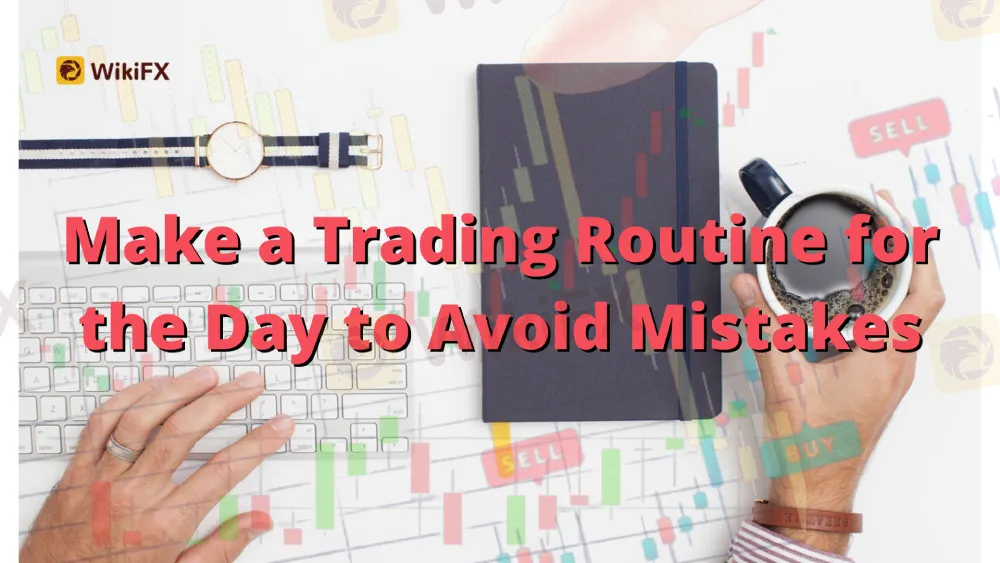Abstract:Day traders make mistakes. They often develop as a result of too much information coming in at once, leading you to get overwhelmed, worried, or irritated. Mistakes might happen during quiet/boring periods when your guard is down.

Day traders make mistakes. They often develop as a result of too much information coming in at once, leading you to get overwhelmed, worried, or irritated. Mistakes might happen during quiet/boring periods when your guard is down. Then there are random errors, such as pressing the incorrect button (purchase instead of sell) or inputting the wrong position size. Even automated tactics may produce issues if the settings are incorrect or software malfunctions.
It might be beneficial to spend a few minutes before each trading day going through a pre-trade ritual or checklist to help reduce mistakes throughout the day. Depending on the market, you may want to add a few more stages to the ones displayed. Running through a routine just takes a few minutes, but it might save you a lot of time and money.
Examine the Economic Calendar
High-impact economic events may produce price spikes or gaps, resulting in severe slippage (a price change between the time you buy and the time the transaction is completed) on stop-loss orders. It is advised to avoid trading during the few minutes before high-impact planned news events.
Before investing, review your economic calendar and take note of any major news events. Bloomberg is a good source of news for US equities and futures. Check out the WikiFX economic calendar for Forex.
If you trade specific stocks regularly, be sure the firm doesn't have any results or other releases scheduled for that day. The earnings calendar on Yahoo! Finance works wonderfully. Be aware of these periods to prevent trading before announcements.
Platform for Launch
Start your platform. Check that quotations are flowing (rather than sluggish or irregular) and that the software is working smoothly. Although most brokers offer dependable data feeds, issues might develop. If the data stream is interrupted or seems to be erroneous, do not trade until the problem is resolved. Proceed if everything seems to be in order.
Correct Account and Contract Trading
You may use the same platform to log in to several accounts in MetaTrader and NinjaTrader, for example. Check that you are trading in the proper account. Be extremely cautious if you day trade in a simulated account and have real accounts. You don't want to conclude the day thinking about how lucrative it was just to learn you traded in simulation rather than real money.
If you are day trading futures, be certain that you are trading the highest volume contract. Keep an eye out for contract expiry dates.
Make Text Messages to Yourself
Put text annotations on your chart indicating when high-impact news releases occur. If you are immersed in a deal, you may forget about one of these occurrences, which may cost you dearly. Make a note of it on your chart.
Scroll over and place the text note towards the estimated time of the announcement if the event happens later in the day. That way, you'll be able to view it when the time comes.
Check Your Automated Strategies Three Times
Even if you trade every day by hand, you may have some automated orders. For example, when you initiate a trade-in NinjaTrader or MetaTrader, you may send out stop-loss orders and objectives. Make certain that these stop-loss orders and objectives are properly established.
Before you begin trading using a “robot” or scripts, make sure all settings are correct and scripts are loaded.
Size of the Default Position
If you use a default position size, check sure it is set correctly. Adding a digit to a position size might be disastrous. Dropping a number means you only get a fraction of what you might have gotten and lost out on a chance.
If you manually adjust your position size based on your entry point and stop loss locations, keep a note of your account balance before you begin trading. Having a small position size minimizes the risk to a small percentage of the account, such as 1%. You may risk up to $350 on a transaction if you have a $35,000 account. Remind yourself throughout the day that this is the greatest risk you can take on a single trade by keeping this maximum risk in mind (or writing it down on your screen).
Important Considerations
You might keep a trading notebook every day to remind yourself of any blunders you may have made. Remind yourself of any troublesome habits and how you intend to handle difficult circumstances if they happen. Review your primary trading ideas and tactics.
Market Situation
Make a fast evaluation of pre-market trade conditions. Is there any volatility, or is it calm? Do you observe any patterns or particular tendencies?
Such an evaluation will tell you how to continue and if you should trade your system at all. This is particularly true when utilizing a subjective system—one that fluctuates somewhat depending on market circumstances.
In turbulent circumstances, for example, you may have a higher projected profit objective than on a day with less volatility.
Establish a Quitting Time (Optional)
If you identify a time of day when you consistently lose transactions, make a mental note to cease trading at that time. When trading US markets, many day traders lose money during the hours around (and including) the New York lunch hour.
If you detect this pattern, attempt to avoid trading. Make notes for yourself, set reminders or alarms, and put them in your daily routine as a reminder.
Begin Trading With Your Key Ideas in Mind
You're ready to start trading. To prevent pitfalls like trading the wrong account or contract, trading during the news, or just not preparing your mind to trade, follow this approach.
Keep your primary trading concepts in mind as you begin searching for prospective trade settings. This will keep you out of transactions that are not in your trading strategy and will keep you awake and ready to seize favorable possibilities.
Make a Trading Routine for the Day
Depending on your trading style and the market your trade-in, your day trading process may differ significantly from this. It does, however, assist to establish a routine. It simply takes a minute or two to complete and may save you a lot of time and stress.
More WikiFX educational articles may be found at the following address: https://www.wikifx.com/en/education/education.html.












